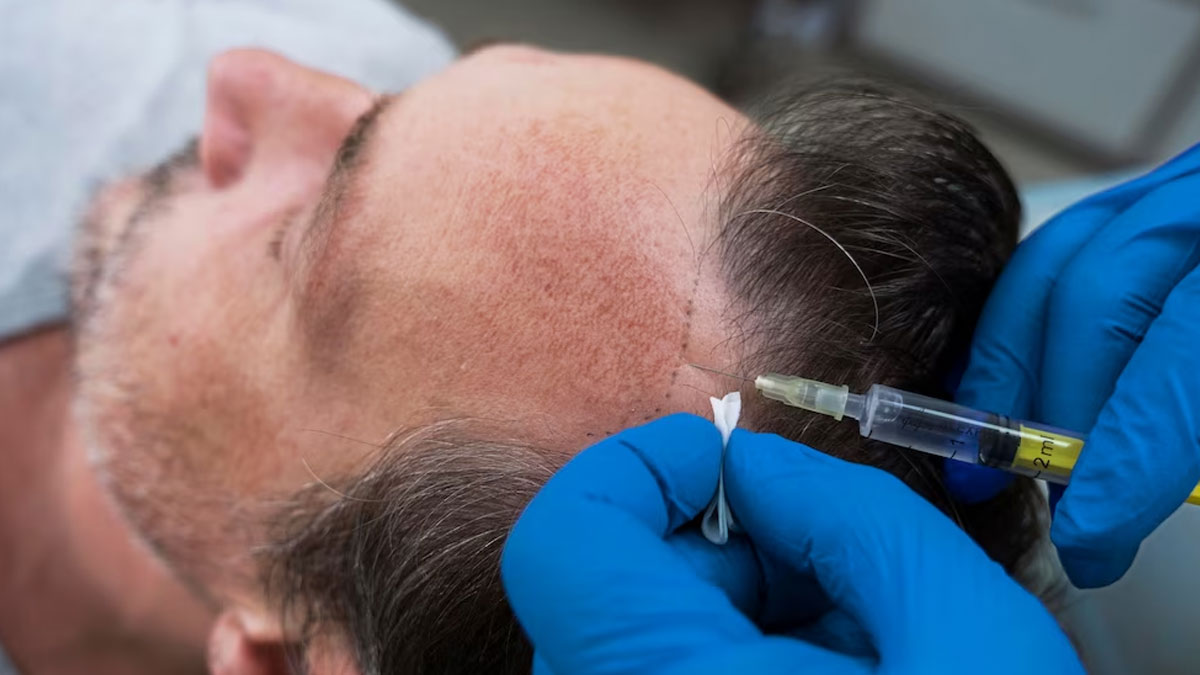
If you’re suffering from excessive hair loss, greying, and baldness, it is important to consult a doctor at the earliest. Common causes of baldness include genetics, hormonal changes, and certain medical conditions or treatments, such as alopecia areata or chemotherapy. In such cases, some people, with the guidance of their healthcare provider, can resort to a hair transplant. It is typically considered when a person has experienced significant hair loss and traditional methods like medications or lifestyle changes have not been effective in restoring hair growth.
Table of Content:-
In an interaction with OnlyMyHealth, Dr Nivedita Dadu, Renowned Dermatologist, Founder and Chairman of Dadu Medical Centre, New Delhi, shares her expertise and lists down the things that need to be kept in mind while preparing for a hair transplant.
Also Read: Unlocking the Secret To Beautiful Hair: Benefits And Different Ways To Use Rice Water
The Woes Of Hair Loss And Balding

Hair loss has been a major concern, especially among the male population. According to a small community-based cross-sectional study published in the Journal of Clinical and Diagnostic Research for doctors, prevalence of hair fall was found to be 60.3%, whereas prevalence of baldness among men between the ages of 18-35 was 50.7%.
In addition, data provided in Endotext publication suggests that Male androgenetic alopecia (MAA) is the most common form of hair loss in men, affecting 30-50% of men by age 50.
Hence, according to the International Society for Hair Restoration Surgery (ISHRS), an estimated 7.3 lakh hair restoration procedures were performed worldwide in 2019. There was an overall increase of 16% compared to 2016.
Things To Know Before Getting A Hair Transplant Procedure

Dr Dadu said, “It's important to understand that preparing for a hair transplant involves more than just making an appointment. It's about educating yourself, setting realistic expectations, and preparing both mentally and physically.” Here are a few things she wants you to know before a hair transplant procedure.
Consultation: The first and most crucial step is to schedule a consultation with a qualified hair transplant specialist. Dr Dadu said, “During this appointment, the doctor will discuss your medical history, examine your scalp, and determine the most appropriate approach for your specific case.”
Understand the procedure: It's essential to have a clear understanding of the hair transplant procedure itself. From the extraction technique, such as Follicular Unit Extraction (FUE) or Follicular Unit Transplantation (FUT), to post-procedure care, the doctor will guide you through each step to ensure you are well informed and prepared, said Dr Dadu.
Lifestyle adjustments: Depending on your unique circumstances, the doctor may recommend certain lifestyle adjustments before the procedure. This may include avoiding blood-thinning medications, quitting smoking, or adjusting your exercise routine to ensure a successful and smooth surgery.
Also Read: Dry And Damaged Hair? Here're 5 Homemade Conditioners You Can Try
What To Keep In Mind During The Procedure

Here’s what you can expect during the hair transplant procedure:
Anaesthesia: To ensure your comfort throughout the procedure, local anaesthesia will be administered to numb the donor and recipient areas of your scalp. You can expect to feel minimal discomfort during this process.
Donor hair extraction: “If you opt for FUE, individual hair follicles will be carefully extracted from the donor area using specialised instruments. Alternatively, if you choose FUT, a thin strip of hair-bearing tissue will be removed,” said Dr Dadu.
Graft placement: Once the donor's hair is prepared, the doctor will meticulously place the grafts into the recipient area, taking into account natural hairline design and optimal density. This step requires precision and artistry to ensure natural-looking results.
What Follows?
Post-procedure care is crucial for a successful recovery and the best possible outcome. Here are a few things to keep in mind:
Recovery period: Following the procedure, you may experience some mild discomfort, swelling, or redness in the treated areas. These are normal and temporary side effects that will gradually subside in the coming days. The doctor will provide you with detailed instructions on how to care for your scalp during this recovery period.
Patience and healing: It's important to remember that hair growth is a gradual process. Initially, the transplanted hair may shed before new hair begins to grow. Be patient, as this is part of the natural healing and regrowth cycle. Results will become more apparent over the coming months, bringing you closer to your desired outcome.
Follow-up visits: Regular follow-up visits will be scheduled to monitor your progress and address any concerns you may have. This ongoing support ensures that the patient achieves the best possible long-term results.
Also watch this video
How we keep this article up to date:
We work with experts and keep a close eye on the latest in health and wellness. Whenever there is a new research or helpful information, we update our articles with accurate and useful advice.
Current Version
